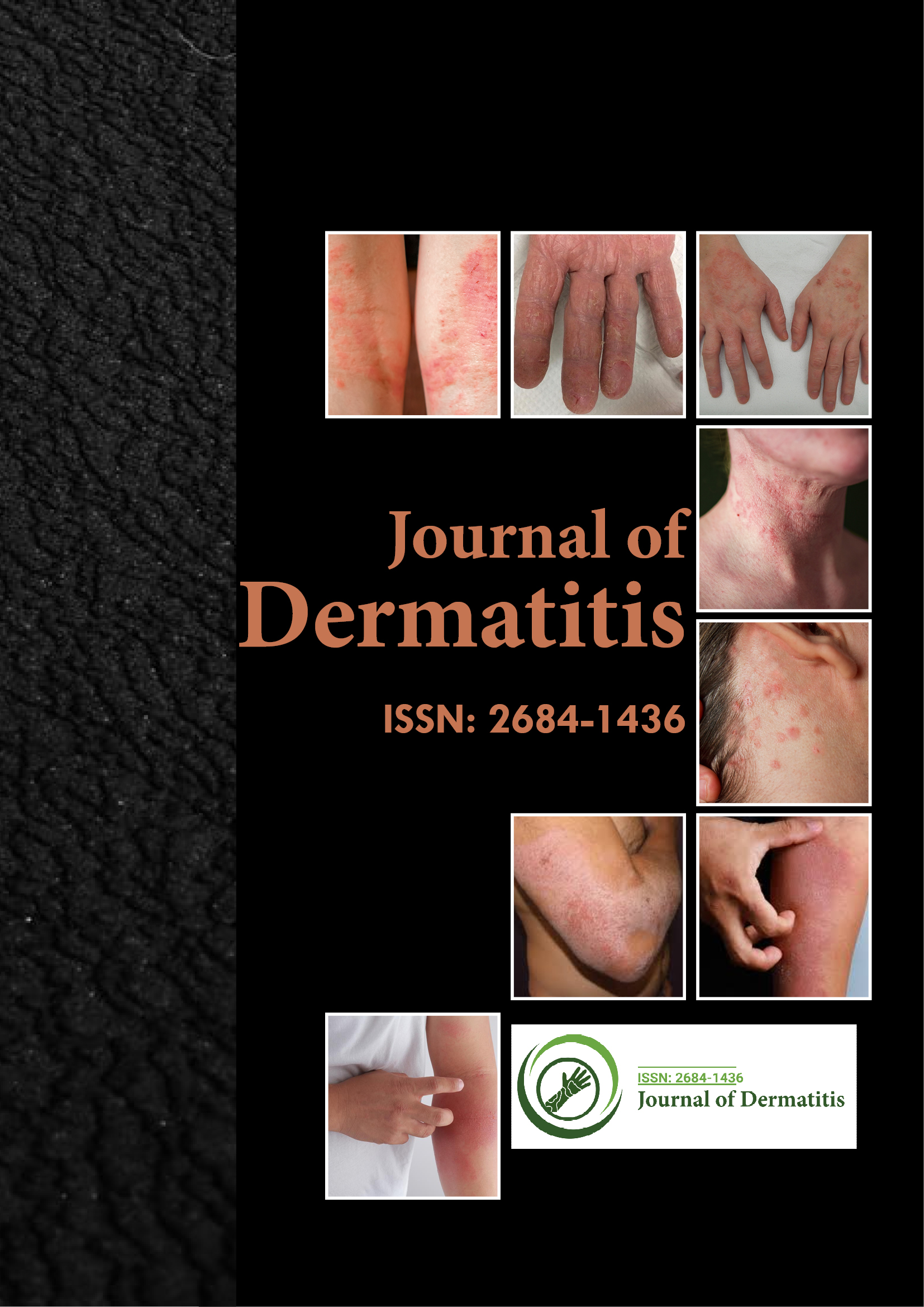Indexed In
- RefSeek
- Hamdard University
- EBSCO A-Z
- Euro Pub
- Google Scholar
Useful Links
Share This Page
Journal Flyer

Open Access Journals
- Agri and Aquaculture
- Biochemistry
- Bioinformatics & Systems Biology
- Business & Management
- Chemistry
- Clinical Sciences
- Engineering
- Food & Nutrition
- General Science
- Genetics & Molecular Biology
- Immunology & Microbiology
- Medical Sciences
- Neuroscience & Psychology
- Nursing & Health Care
- Pharmaceutical Sciences
Commentary - (2025) Volume 10, Issue 1
Impact of Environmental Factors on Contact Dermatitis: An Overview
Cameron Grimes*Received: 19-Jan-2024, Manuscript No. JOD-24-24652; Editor assigned: 23-Jan-2024, Pre QC No. JOD-24-24652 (PQ); Reviewed: 06-Feb-2024, QC No. JOD-24-24652; Revised: 06-Jan-2025, Manuscript No. JOD-24-24652 (R); Published: 13-Jan-2025, DOI: 10.35248/2684-1436.25.10.263
Description
Contact dermatitis, a common skin condition characterized by redness, itching, and inflammation, arises from direct skin contact with irritants or allergens. While genetic predispositions play a role in susceptibility, environmental factors play a pivotal role in the development and exacerbation of contact dermatitis. Understanding the impact of these environmental factors is essential in devising preventive strategies and effective management approaches for individuals affected by this dermatologic condition.
Environmental factors contributing to contact dermatitis can be broadly classified into irritants and allergens. Irritant Contact Dermatitis (ICD) results from exposure to substances that directly damage or irritate the skin, while Allergic Contact Dermatitis (ACD) is an immune-mediated response triggered by sensitization to specific allergens. A range of environmental factors, encompassing occupational exposures, lifestyle choices, and geographical considerations, influences the prevalence of both types of contact dermatitis.
Occupational exposures represent a significant subset of environmental factors contributing to contact dermatitis. Individuals in certain professions are at an increased risk due to repeated and prolonged contact with potential irritants or allergens. Occupations involving frequent handwashing, exposure to cleaning agents, solvents, and industrial chemicals can lead to ICD. Healthcare workers, hairdressers, mechanics, and those in the food industry are particularly vulnerable.
The type and concentration of substances encountered in the workplace significantly impact the risk of developing contact dermatitis. For example, hairdressers regularly handle hair dyes containing Paraphenylenediamine (PPD), a common allergen known to trigger ACD. Similarly, healthcare workers may be exposed to latex, a known allergen, through the frequent use of latex gloves. Identifying and minimizing these occupational exposures are important steps in mitigating the impact of environmental factors on contact dermatitis.
Geographical considerations also play a role in the prevalence of contact dermatitis. Climate, temperature, and humidity can influence the types of irritants and allergens present in the environment. In warmer and more humid climates, individuals may be exposed to different plants, insects, or chemicals that can act as triggers for contact dermatitis. Moreover, variations in environmental conditions can affect the skin barrier function, making it more susceptible to irritants and allergens.
Lifestyle choices, including personal care products and clothing, contribute significantly to the environmental factors influencing contact dermatitis. Cosmetics, fragrances, and skincare products often contain a myriad of chemicals that can act as potential irritants or allergens. The use of scented lotions, perfumes, or certain makeup products can lead to ACD in susceptible individuals. Additionally, the choice of fabrics in clothing, especially when combined with laundry detergents, can contribute to irritant contact dermatitis.
Exposure to environmental pollutants is another facet of the complex interplay between the environment and contact dermatitis. Airborne pollutants, such as particulate matter and industrial emissions, can settle on the skin, potentially acting as irritants. Moreover, the interaction between pollutants and ultraviolet radiation may exacerbate the inflammatory response in individuals with contact dermatitis. Research in this area is ongoing to elucidate the specific mechanisms through which environmental pollution influences the pathogenesis of contact dermatitis.
The impact of environmental factors on contact dermatitis extends beyond the immediate symptoms, affecting the quality of life for affected individuals. The persistent itching, discomfort, and visible skin changes associated with contact dermatitis can lead to psychological distress, impacting self-esteem and overall well-being. The chronic nature of contact dermatitis, especially in cases of repeated exposure, may result in long-term skin damage and complications.
Preventing and managing contact dermatitis necessitate a multifaceted approach that considers both environmental factors and individual susceptibility. Occupational safety measures, such as the use of protective equipment and adherence to proper hygiene practices, are important in minimizing the risk of contact dermatitis in high-risk professions. Education and awareness campaigns can help individuals identify potential allergens and irritants in their daily lives, facilitating informed lifestyle choices.
Treatment of contact dermatitis often involves a combination of topical therapies, systemic medications, and preventive measures. Topical corticosteroids are commonly used to alleviate inflammation and itching, while emollients and moisturizers help restore the skin barrier function. In cases of severe or refractory contact dermatitis, systemic medications such as oral corticosteroids or immunomodulatory drugs may be prescribed.Conclusion
The impact of environmental factors on contact dermatitis underscores the importance of recognizing and mitigating external triggers. From occupational exposures to lifestyle choices, a myriad of factors contribute to the development and exacerbation of contact dermatitis. A comprehensive and individualized approach, encompassing preventive measures, patient education, and collaboration between healthcare professionals and various stakeholders, is important in managing this common dermatologic condition.Citation: Grimes C (2025) Impact of Environmental Factors on Contact Dermatitis: An Overview. J Dermatitis. 10:263.
Copyright: © 2025 Grimes C. This is an open access article distributed under the terms of the Creative Commons Attribution License, which permits unrestricted use, distribution, and reproduction in any medium, provided the original author and source are credited.

